Opus BT-C100 is a single port charger for Li-Ion, NiMh, and LiFePo4 batteries in any size, from 10440 (AAA size) to 32650. It also can be used as powerbank and has many other additional features.
I receive this Opus BT-C100 charger (not an affiliate link) from Gearbest for review purpose.
It’s my third charger, former chargers were XTAR MP1S and XTAR VC2 (still use it till now).
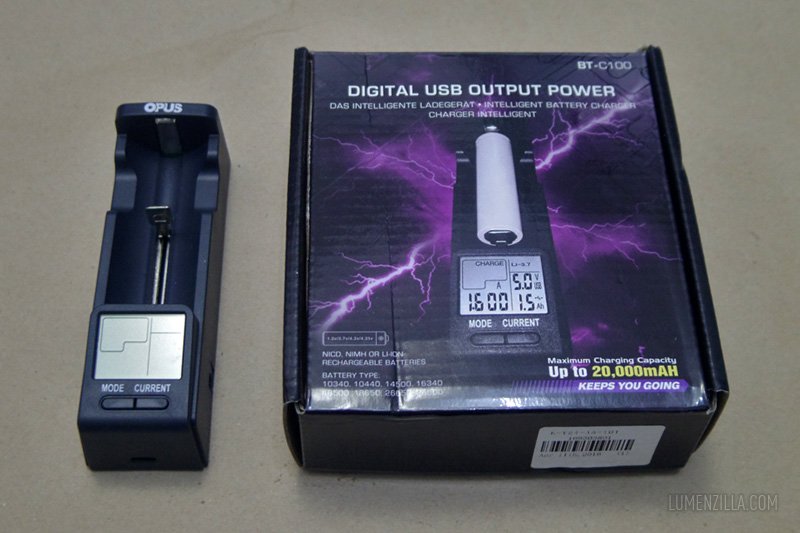
Inside the box, there are the charger, 12 volt power supply, and a piece of operating manual sheet.
This charger can be used as power bank, but micro USB cable is not included in the package.
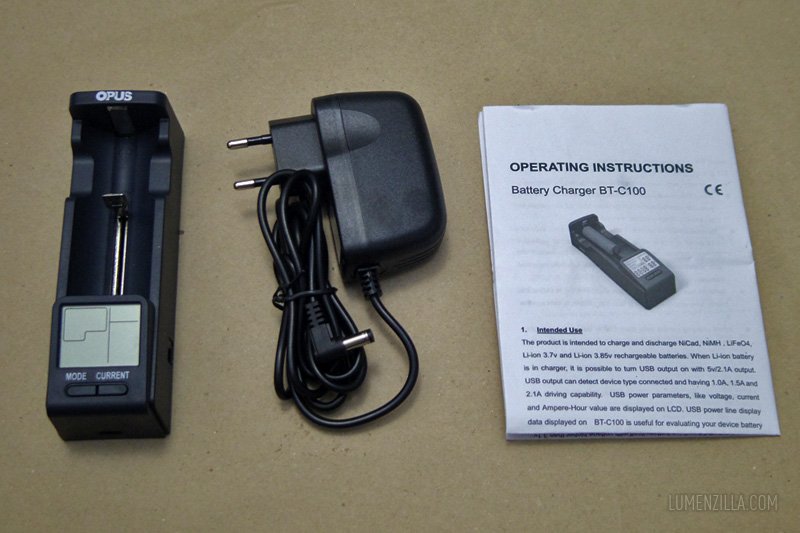
The power supply output is 12 volts and available in US or EU wall plug version. Choose wisely according to your home wall outlet.
The power supply itself is an optional power source because Opus BT-C100 can get power source from any USB ports like powerbank, phone charger, laptops, LED TV, etc.
Here’s how the charger look like, from several different angles.
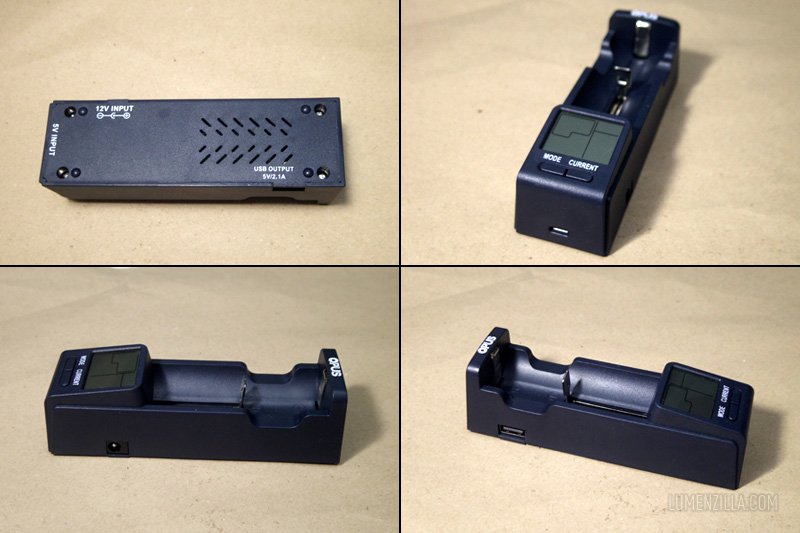
The charger uses classical slider construction to handle most battery sizes, from 33 mm up to 73.5 mm so we can use it to charge 16340 up to 18650 battery length.
I have two 16340 batteries (non branded) that don’t fit with the charger because it’s too short, but other batteries work just fine.
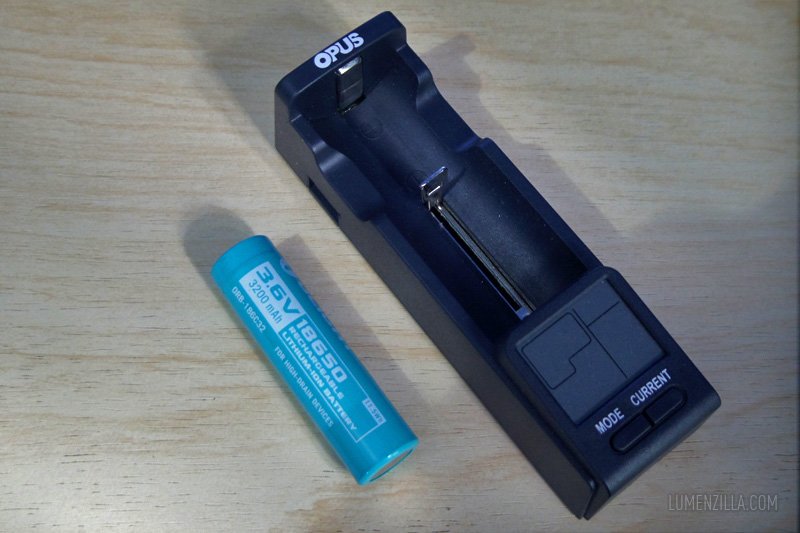
Opus BT-C100 has two buttons for operating the charger.
I must underline that this is not an easy to use charger, but it’s not too difficult as well. Might need several couple of minutes to fully understand how to operate the charger properly.
Opus BT-C100 has has several operating modes:
-
CHARGE: Charge batteries with 200 to 2000 mA (configurable).
-
DISCHARGE: Discharge battery with 100 to 1000 mA (configurable).
-
DISCHARGE REFRESH: Discharge and charge the battery for 3 times.
-
CHARGE TEST: Charge, discharge and charge the battery. It will show us the real battery capacity.
-
IMPEDANCE TEST: Measure the internal resistance of the battery.
Selected mode is shown on top left of its LED display while the detected battery type shown on top right.

When charging, we can select desired current from 200 to 2000 mA. With smaller current, it will take longer time to complete but will likely preserve our battery lifespan.
A cool feature I like from Opus BT-C100 is the ability to check battery voltage without any power supply attached. Just insert any battery and it will read battery voltage and display the result on the screen.
Unfortunately, it displays battery voltage information too fast. Less than one second.
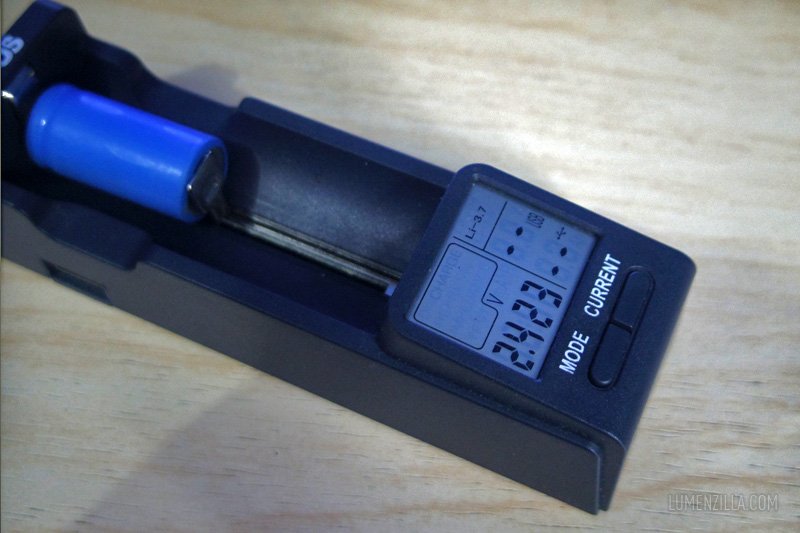
As mentioned earlier, we can use this charger as power bank to charge any USB powered devices.
The power bank function will not run automatic as we insert the battery. To enable this function, press the CURRENT button until the USB status is ON.

After the USB is ON, plug USB cable into the USB port and we can start charging.
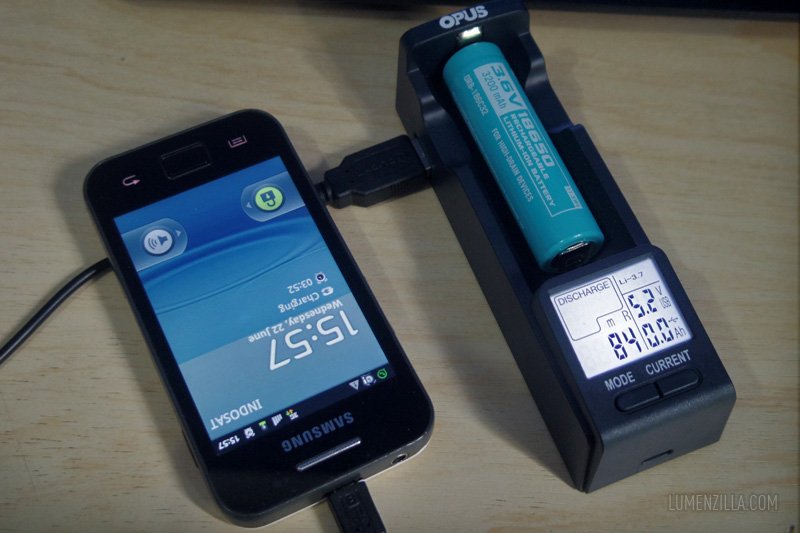
For the price, it is an awesome charger with many features almost near to a hobby charger. To fully understand how to use all of it features, read its operating manual again and again.
Opus BT-C100 Experience
Pros:
-
Full featured charger at an affordable price (read: cheap).
-
One charger for any battery size and type/chemistry.
-
Can be used as power bank.
-
LED display gives useful information.
Cons:
-
Not the easiest charger to operate.
-
No micro USB cable included.
-
The feel of the body material is not very solid.
Bottomline:
If you’re looking for an affordable battery charger for various type of battery size and format — with power bank feature, Opus BT-C100 is an ideal option. But if you’re looking for an easy to use charger, I can say that you must spare a little time to learn how to operate this charger.
